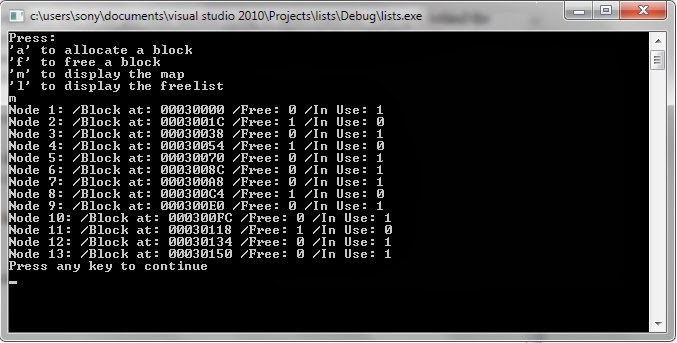Hey :) ,
This is maybe a first write-up of many which will discuss windows kernel debugging.
I've mentioned in my previous post "
protected processes" and I decided to share with you this writeup discussing them and showing some applied kernel debugging.
Protected processes are digitally signed processes that were first introduced in Windows Vista in order to protect Media contents (HD/Blu-ray).
The use of Protected processes wasn't hindered by Media use only . Processes such as System and Werfault.exe (Displays information about crashes and needs access to protected processes in case one of them crashes) are protected. So you can see that protected processes can interact with each other normally. In addition, even a normal process has the ability to create a Protected process BUT it will certainly fail because a special digital signature isn't present in the created process
Another point is that Protected Processes forbid users even with an administrator account to debug them,dump memory,edit memory. Furthermore, access rights to a protected process are limited for instance
PROCESS_QUERY_LIMITED_INFORMATION / PROCESS_SUSPEND_RESUME / PROCESS_TERMINATE accesses are granted while
PROCESS_ALL_ACCESS is not.
As you may know, each process has an executive process (EPROCESS) structure that resides in Kernel mode and which can be accessed only from it. The EPROCESS structure contains detailed information about the process and points to many other structures like KTHREAD structures list, and it also contains structures like
pcb which is a KPROCESS structure and the first element of EPROCESS.
Speaking about Protected Processes , EPROCESS has a special bit that defines the nature of a process (protected or not).
In our example we will try to attach (audiodg.exe) which is a protected process to OllyDbg. The result is the following:
We have 2 choices here , the first is to make Ollydbg a protected process and then Attach it to audiodg.exe or zeroing the bit in audiodg.exe EPROCESS structure to make it unprotected then attach it normally.
We'll do the first one, we can similarly do this with "Task Manager" to create a dump of audiodg.exe or any protected process then examine that dump.
So let's set up the kernel debugger and display the EPROCESS structure for ollydbg.exe :
lkd> dt _EPROCESS 846d8030
nt!_EPROCESS
+0x000 Pcb : _KPROCESS
+0x098 ProcessLock : _EX_PUSH_LOCK
+0x0a0 CreateTime : _LARGE_INTEGER 0x01cf1a21`239824ec
+0x0a8 ExitTime : _LARGE_INTEGER 0x0
+0x0b0 RundownProtect : _EX_RUNDOWN_REF
[...CUT __ CUT...]
+0x26c Flags2 : 0x2d014
+0x26c JobNotReallyActive : 0y0
+0x26c AccountingFolded : 0y0
+0x26c NewProcessReported : 0y1
+0x26c ExitProcessReported : 0y0
+0x26c ReportCommitChanges : 0y1
+0x26c LastReportMemory : 0y0
+0x26c ReportPhysicalPageChanges : 0y0
+0x26c HandleTableRundown : 0y0
+0x26c NeedsHandleRundown : 0y0
+0x26c RefTraceEnabled : 0y0
+0x26c NumaAware : 0y0
+0x26c ProtectedProcess : 0y0 <-- bit in which we are interested.
+0x26c DefaultPagePriority : 0y101
+0x26c PrimaryTokenFrozen : 0y1
+0x26c ProcessVerifierTarget : 0y0
+0x26c StackRandomizationDisabled : 0y1
+0x26c AffinityPermanent : 0y0
+0x26c AffinityUpdateEnable : 0y0
+0x26c PropagateNode : 0y0
+0x26c ExplicitAffinity : 0y0
[...CUT __ CUT...]
+0x2b0 RequestedTimerResolution : 0
+0x2b4 ActiveThreadsHighWatermark : 5
+0x2b8 SmallestTimerResolution : 0
+0x2bc TimerResolutionStackRecord : (null)
So all we need to do now is set that bit , in order to so we'll need to edit
Flags2.
You can see that the "Protected Process" bit is the 12th bit and we'll need to set it to 1.
0x2d014 ->
101101 0 00000010100
Setting this bit will need us to set
Flags2 to 0x2d814 ->
101101 1 00000010100 .
lkd> ed 846d8030+0x26c 0x2d814
lkd> dt _EPROCESS 846d8030
nt!_EPROCESS
+0x000 Pcb : _KPROCESS
+0x098 ProcessLock : _EX_PUSH_LOCK
[...]
+0x26c Flags2 : 0x2d814
+0x26c JobNotReallyActive : 0y0
+0x26c AccountingFolded : 0y0
+0x26c NewProcessReported : 0y1
+0x26c ExitProcessReported : 0y0
+0x26c ReportCommitChanges : 0y1
+0x26c LastReportMemory : 0y0
+0x26c ReportPhysicalPageChanges : 0y0
+0x26c HandleTableRundown : 0y0
+0x26c NeedsHandleRundown : 0y0
+0x26c RefTraceEnabled : 0y0
+0x26c NumaAware : 0y0
+0x26c ProtectedProcess : 0y1 <-- Ollydbg.exe is a protected process now
+0x26c DefaultPagePriority : 0y101
+0x26c PrimaryTokenFrozen : 0y1
+0x26c ProcessVerifierTarget : 0y0
+0x26c StackRandomizationDisabled : 0y1
+0x26c AffinityPermanent : 0y0
+0x26c AffinityUpdateEnable : 0y0
+0x26c PropagateNode : 0y0
+0x26c ExplicitAffinity : 0y0
Now we'll simply try to attach audiodg.exe and it will work as expected :
I hope you enjoyed reading this short writeup.
See you later :).
Regards,
Souhail Hammou . @Dark_Puzzle



